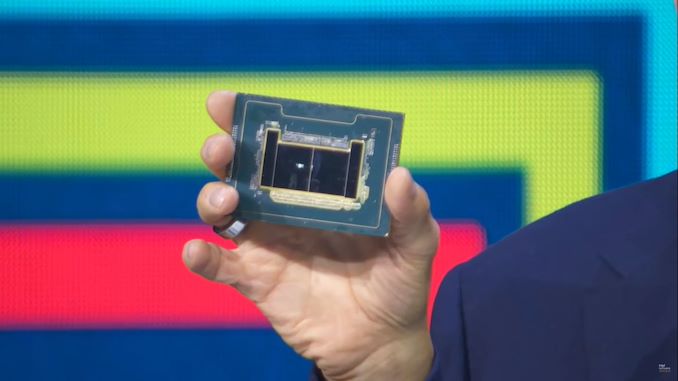
At MWC 2024, Intel confirmed that Granite Rapids-D, the successor to Ice Lake-D processors, will come to market sometime in 2025. Furthermore, Intel also provided an update on the 6th Gen Xeon Family, codenamed Sierra Forest, which is set to launch later this year and will feature up to 288 cores designed for vRAN network operators to improve performance in boost per rack for 5G workloads.
These chips are designed for handling infrastructure, applications, and AI workloads and aim to capitalize on current and future AI and automation opportunities, enhancing operational efficiency and ownership costs in next-gen applications and reflecting Intel's vision of integrating 'AI Everywhere' across various infrastructures.
Intel Sierra Forest: Up to 288 Efficiency Cores, Set for 2H 2024
The first of Intel's announcements at MWC 2024 focuses on their upcoming Sierra Forest platform, which is scheduled for the 1st half of 2024. Initially announced in February 2022 during Intel's Investor Meeting, Intel is splitting its server roadmap into solutions featuring only performance (P) and efficiency (E) cores. We already know that Sierra Forest's new chips feature a full E-core architecture designed for maximum efficiency in scale-out, cloud-native, and contained environments.
These chips utilize CPU chiplets built on the Intel 3 process alongside twin I/O chiplets based on the Intel 7 node. This combination allows for a scalable architecture, which can accommodate increasing core counts by adding more chiplets, optimizing performance for complex computing environments.
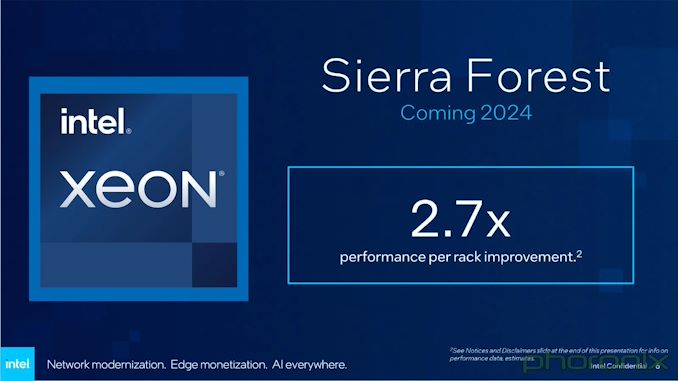
Intel's Sierra Forest, Intel's full E-core designed Xeon processor family, is anticipated to significantly enhance power efficiency with up to 288 E-cores per socket. Intel also claims that Sierra Forest is expected to deliver 2.7 times the performance-per-rack compared to an unspecified platform from 2021; this could be either Ice Lake or Cascade Lake, but Intel didn't mention which.
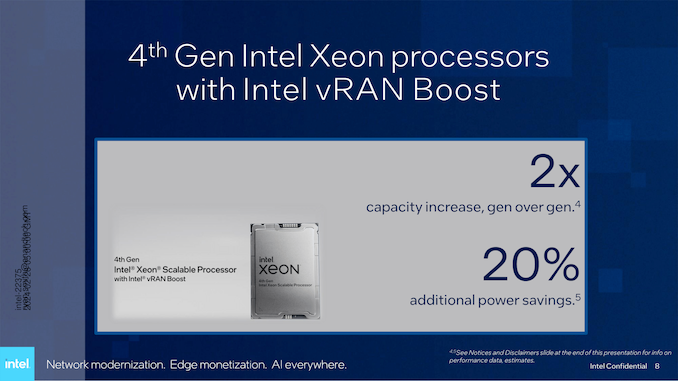
Additionally, Intel is promising savings of up to 30% in Infrastructure Power Management with Sierra Forest as their Infrastructure Power Manager (IPM) application is now available commercially for 5G cores. Power manageability and efficiency are growing challenges for network operators, so IPM is designed to allow network operators to optimize energy efficiency and TCO savings.
Intel also includes vRAN, which is vital for modern mobile networks, and many operators are forgoing opting for specific hardware and instead leaning towards virtualized radio access networks (vRANs). Using vRAN Boost, which is an integrated accelerator within Xeon Processors, Intel states that the 4th Gen Xeon should be able to reduce power consumption by around 20% while doubling the available network capacity.
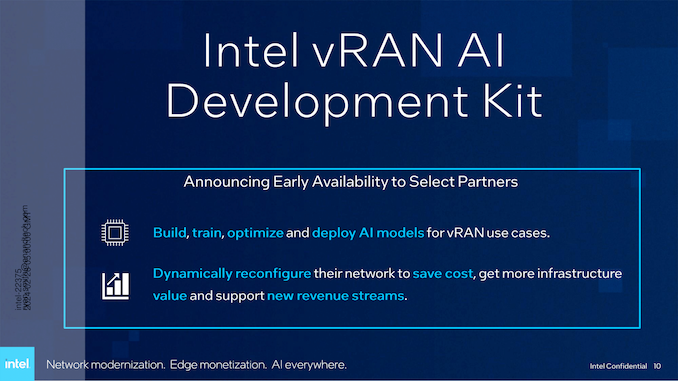
Intel's push for 'AI Everywhere' is also a constant focus here, with AI's role in vRAN management becoming more crucial. Intel has announced the vRAN AI Developer Kit, which is available to select partners. This allows partners and 5G network providers to develop AI models to optimize for vRAN applications, tailor their vRAN-based functions to more use cases, and adapt to changes within those scenarios.
Intel Granite Rapids-D: Coming in 2025 For Edge Solutions
Intel's Granite Rapids-D, designed for Edge solutions, is set to bolster Intel's role in virtual radio access network (vRAN) workloads in 2025. Intel also promises marked efficiency enhancements and some vRAN Boost optimizations similar to those expected on Sierra Forest. Set to follow on from the current Ice Lake-D for the edge; Intel is expected to use the performance (P) cores used within Granite Rapids server parts and optimize the V/F curve designed for the lower-powered Edge platform. As outlined by Intel, the previous 4th generation Xeon platform effectively doubled vRAN capacity, enhancing network capabilities while reducing power consumption by up to 20%.
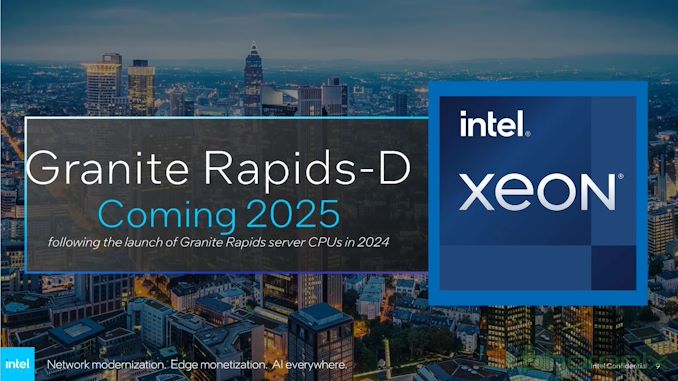
Granite Rapids-D aims to further these advancements, utilizing Intel AVX for vRAN and integrated Intel vRAN Boost acceleration, thereby offering substantial cost and performance benefits on a global scale. While Intel hasn't provided a specific date (or month) of when we can expect to see Granite Rapids-D in 2025, Intel is currently in the process of sampling these next-gen Xeon-D processors with partners, aiming to ensure a market-ready platform at launch.













